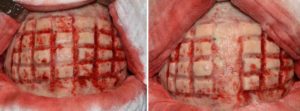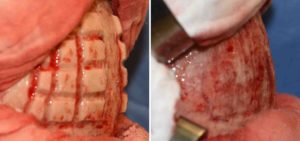Background: Macrocephaly can be a pathologic condition where the entire size of the head, the skull, scalp and intracranial contents, are abnormally large. There are a variety of causes for it including hydrocephalus, genetic conditions and an enlarged brain as some of the most common reasons. These are usually treated a younger age of often require an open craniotomy/cranioplasty.
But much milder cases of an enlarged head exists in which the person is healthy and the head size or one specific part of the head is larger than desired. These are not true macrocephaly and are better called an ‘aesthetic macrocephaly’ or an undesired head enlargement or disproportion.
Aesthetic skull reduction is possible and can be done by outer table cortical bone removal. The front, top and back of the skull can be reduced by this bone burring method to create visible and palpable reductive changes. It is limited in reduction to removal of the outer cortical layer of the skull which varies amongst individual, gender and ethnicities. But on average a total of 7mm to 9mm of bone can be safely removed down to the diploid space. While that may not sound like much based on a thickness number, when it is done all across the top of the head the result is more significant than the number along would imply.


Skull reduction is capable of making some modest skull size changes but I would never call them dramatic in magnitude. The greater the skull surface area treated the more significant effect there can be. The fine line scalp scar is always an aesthetic tradeoff and one has to weigh that liability to the potential reductive benefits achieved.
Highlights:
1) Skull reduction can be done for visible changes but there are limits as to how much reduction can be done based on bone thickness of the outer table.
2) Taking down the height of the skull can be done to either mostly reduceits height or change a very round shape to a flatter one.
3) The grid pattern of skull reduction offers a precise method to achieve the most even and smooth result.
Dr. Barry Eppley
Indianapolis, Indiana





